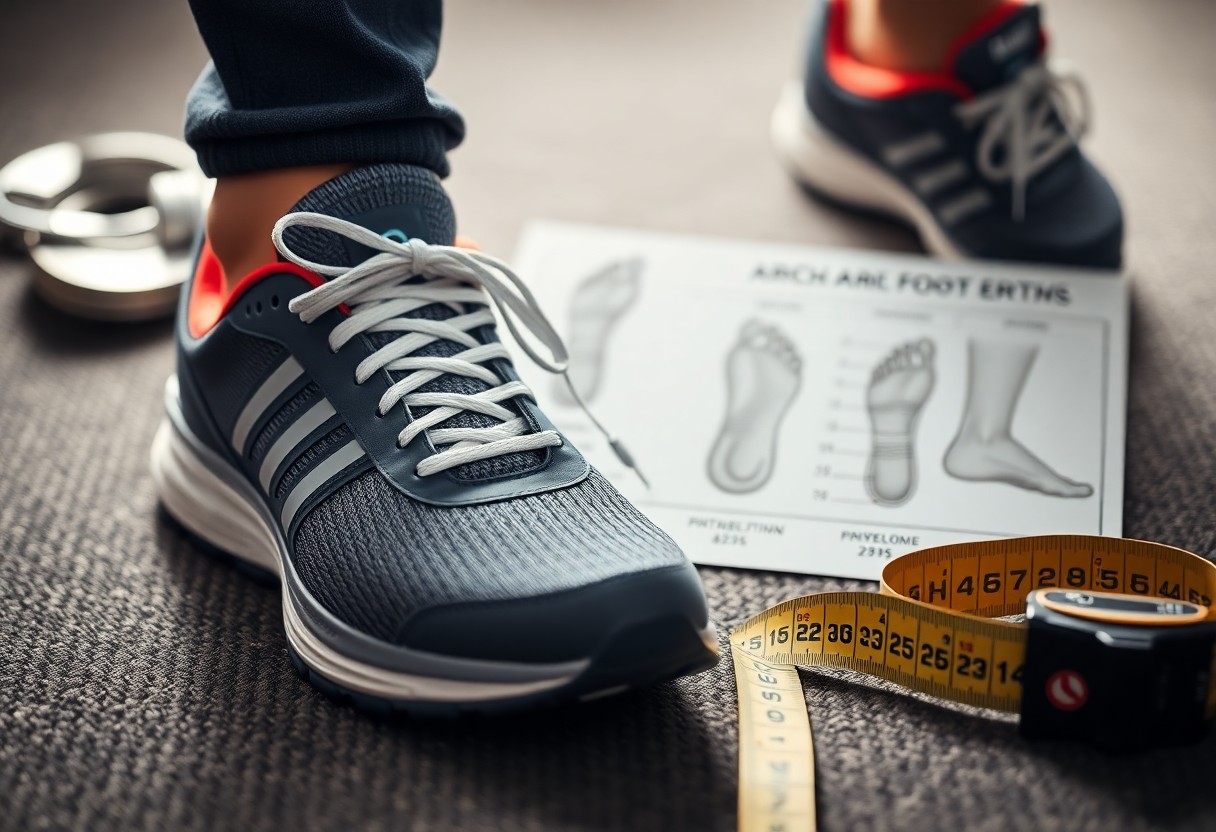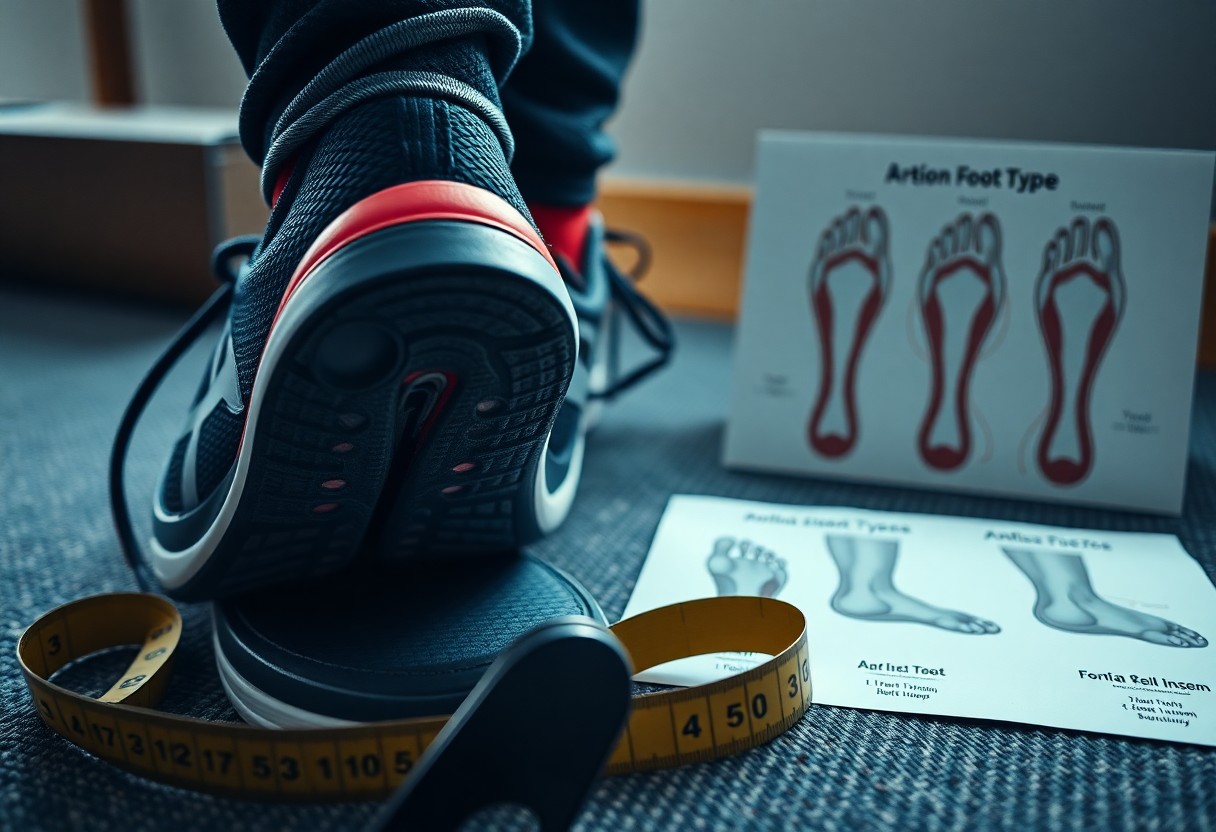Supporting your feet effectively involves more than just adding arch support to your footwear. Surprisingly, the majority of people do not need arch support in their shoes. Research shows that avoiding arch supports can actually strengthen your foot muscles. Over time, becoming dependent on artificial supports may weaken these muscles. The human foot is naturally equipped with arches that flex and adjust to different terrains, and limiting this natural flexibility with rigid supports can negatively impact your foot health over time. This in-depth article will explore the science behind arch support, empowering you to make educated choices regarding your foot health.

Discovering the Historical Context of Arch Support in Footwear
The natural support system of your feet has played a critical role in the design of footwear throughout history. The concept of arch support surged in popularity during the 1920s with Dr. William Scholl’s revolutionary introduction of commercial orthotics. Before this innovation, individuals primarily relied on their feet’s inherent strength and flexibility. Understanding this historical evolution provides valuable insight into how our perception of foot health has transformed over the decades.
Tracing the Development of Traditional Footwear Practices
The history of footwear indicates that early civilizations predominantly utilized simple, flat sandals or often walked barefoot. Such practices facilitated the natural development and robustness of foot structure. The feet of our ancestors were strong and flexible, thriving without artificial supports, as evidenced by studies on indigenous populations who maintain traditional footwear practices. This historical perspective emphasizes the crucial role of natural foot mechanics in preserving foot health.
Analyzing Contemporary Standards in the Shoe Industry
By the mid-20th century, particularly the 1950s, shoe manufacturers began to standardize built-in arch support as a common feature in footwear. Today, most modern shoes are crafted with structured arch support, which has become a prevailing industry standard, even though there is limited scientific evidence supporting its necessity for everyone. This trend reflects changing consumer expectations and industry standards but also raises concerns about the potential effects of such designs on overall foot health.
Currently, arch support is so ubiquitous that 70% of contemporary shoes include this feature. However, research published in the Journal of Foot and Ankle Research indicates that excessive reliance on arch support can lead to muscle weakness in the feet. As a result, many podiatrists now recommend incorporating periods of barefoot walking and using minimally supportive shoes to maintain the natural strength of your feet.

Examining the Complexities of Foot Structure and Function
Your feet consist of 26 bones, 33 joints, and over 100 muscles, and they function most effectively when allowed to move freely. The arch of the foot is a self-supporting structure that strengthens with regular use, while artificial support can lead to muscle weakness. Studies show that 75% of individuals wearing traditional shoes with arch support experience decreased foot muscle activity, which can contribute to diminished natural strength over time.
Understanding the Marvel of Natural Foot Mechanics
The design of your foot is a remarkable feat of engineering, incorporating a complex system for self-support. Walking barefoot or in minimal shoes allows your feet to achieve a full range of motion, which enables your arches to flex and strengthen naturally. Research suggests that people who frequently walk barefoot or choose minimal footwear develop stronger foot muscles and more stable arches than those who rely on supportive shoes. This highlights the importance of natural movement in promoting foot health.
Boosting Muscle Function and Overall Foot Development
Disrupting your foot’s natural movement can impede its development. Your foot muscles require consistent engagement through natural activities to preserve their strength. Research published in Nature indicates that wearing shoes without arch support contributes to the development of stronger intrinsic foot muscles. This connection underscores the significance of natural movement for achieving optimal foot health.
Additionally, it’s essential to consider the effects of wearing shoes with built-in arch support. Using these shoes may lead to reduced engagement of foot muscles, resulting in potential weakness over time. Studies have indicated that transitioning to minimal footwear can significantly enhance foot muscle strength by as much as 60% within eight weeks. However, it’s crucial to approach this transition gradually, particularly if you have existing foot issues, to minimize the risk of injury.
Investigating Research and Evidence Related to Foot Health
If you’re keen to understand the scientific basis surrounding arch support, various studies demonstrate that your feet can indeed gain strength without artificial support. Numerous investigations reveal that natural foot movement enhances muscle development and stabilizes arches, highlighting the vital role that biomechanics play in maintaining foot health.
Reviewing Significant Scientific Studies on Arch Support
Among the most significant findings is a study published in Nature that shows individuals who wear minimal footwear develop foot muscles that are 50% stronger than those who wear traditional supportive shoes. This evidence reinforces the idea that regular movement and exercise allow your feet to maintain their arches naturally.
Comparative Analysis of Footwear Choices Across Different Populations
Contrasting the Experiences of Traditional and Minimal Footwear Users
| Traditional Shoe Users | Minimal Shoe Users |
| Exhibit higher rates of flat feet | Demonstrate superior arch strength |
| Show weaker foot muscles | Exhibit stronger foot muscles |
A comprehensive examination of diverse populations indicates that significant differences in foot health exist. Your foot structure can adapt considerably depending on the type of shoes you choose to wear.
Insights from Studies on Global Populations
| Developed Countries | Barefoot Communities |
| 20% flat foot occurrence | 3% flat foot occurrence |
| Higher reliance on arch support | Natural arch strength |

Examining the Paradox of Support in Footwear
Challenging established beliefs, overreliance on arch support in shoes can weaken your feet’s natural strength. The human foot is intricately designed with a complex system of muscles, tendons, and ligaments that work together to provide natural support. When artificial arch support assumes this role, your foot muscles may become less engaged, leading to gradual weakening.
Understanding the Cycle of Dependency on Arch Support
Consistent use of arch support creates a detrimental dependency cycle. Feet can become reliant on external support, leading to muscle atrophy. Research indicates that 70% of individuals who regularly use arch support report increased discomfort when walking without their supportive shoes, highlighting the formation of this dependency.
Examining the Link Between Muscle Weakness and Arch Support Usage
Wearing shoes equipped with built-in arch supports can weaken your intrinsic foot muscles by as much as 50%, according to findings in Nature. This weakening compromises your feet’s natural arch support mechanism, potentially resulting in conditions like flat feet and other foot-related issues. It’s worth noting that this muscle weakness can extend beyond your feet, as weakened foot muscles can negatively affect your overall posture and balance. Studies reveal that individuals who transition to minimal footwear frequently experience a 60% increase in foot muscle strength within six months.
Exploring Natural Alternatives to Enhance Foot Health
For those interested in moving away from conventional arch support, several natural alternatives are available that can strengthen your feet. These approaches focus on allowing your feet to function as intended, promoting the development of stronger foot muscles and more stable arches through natural movement.
Adopting Minimalist Footwear for Unrestricted Movement
Minimalist shoes, characterized by zero drop soles, wide toe boxes, and flexible materials, encourage natural foot movement. These designs facilitate unrestricted motion, helping to maintain proper foot mechanics and fostering natural arch strength. Research indicates that consistent use of minimal footwear can boost foot muscle strength by up to 60% through everyday activities.
Safe Strategies for Transitioning to Minimal Footwear
When considering a transition to minimalist footwear, it’s essential to take a careful and gradual approach to ensure your safety and comfort. Begin by wearing minimal shoes for short durations, gradually increasing the time over several weeks. This method helps prevent overuse injuries as your feet adjust to their newfound freedom, ensuring a smooth transition.
A successful transition should ideally incorporate specific foot-strengthening exercises. Start with 10-15 minutes of wear per day in minimal shoes, adding an additional 5-10 minutes weekly. Include exercises like toe spreads and short barefoot walks on safe surfaces. This incremental approach allows you to reduce the risk of common transition injuries while effectively enhancing your natural arch strength.
Addressing Important Medical Considerations for Foot Health
It’s critical to acknowledge that your foot health requires individualized attention. While natural foot movement is beneficial for muscle strength, specific medical conditions may necessitate targeted support. Factors such as your foot structure, activity level, and any pre-existing conditions will significantly influence your optimal footwear needs.
Recognizing When Arch Support Is Truly Necessary
Contrary to popular belief, arch support is not universally required. Nonetheless, individuals with acute injuries, severe flat feet, or particular medical conditions may find temporary or permanent arch support beneficial. Research indicates that only 10-20% of the population genuinely requires specialized arch support for medical reasons, emphasizing the importance of personalized evaluations.
Recommendations for Professional Foot Health Evaluations
To ensure informed decision-making regarding your footwear, it’s advisable to seek guidance from a foot health professional. Comprehensive evaluations should include gait analysis, assessment of foot structure, and a review of medical history. These components are vital to determining if arch support is necessary or if transitioning to minimal footwear is a feasible option.
Support from a qualified professional can offer clarity and direction for your foot health journey. A thorough assessment should encompass measuring arch flexibility, evaluating muscle strength, and analyzing walking patterns. Your healthcare provider should also consider your daily activities and any previous foot injuries to develop an effective, personalized treatment plan.
Reassessing Your Footwear Choices for Optimal Foot Health
Your footwear selection plays a pivotal role in determining your foot health. You now recognize that arch support is not essential for most people and may even weaken foot muscles over time. Your feet possess inherent strength and flexibility, functioning optimally when allowed to move as nature intended. If you’re contemplating a transition to minimal footwear, initiating this process gradually will help your feet adapt smoothly. The evidence strongly supports that permitting your feet to function without artificial support can enhance muscle strength and improve foot health for most individuals. Always consider your unique needs and consult a foot health professional for specific concerns.
Common Questions About Arch Support Answered
Do healthy feet actually need arch support in shoes?
Most healthy feet do not require arch support in footwear. Studies suggest that natural foot strength develops more efficiently without artificial support. The muscles and arches of the foot function best when allowed to operate naturally, aligning with research on populations that frequently walk barefoot or prefer minimal shoes, which exhibit stronger foot muscles and fewer arch-related issues.
Can prolonged use of arch support weaken feet over time?
Indeed, prolonged reliance on arch support can lead to weakened foot muscles. When artificial support replaces the function of foot muscles, these muscles become less active and gradually lose strength, creating a cycle of dependency. Research published in Nature shows that individuals who consistently wear traditional shoes with arch support often experience weaker foot muscles compared to those who choose minimal footwear.
Who may genuinely require arch support in their shoes?
Some individuals with specific foot conditions, injuries, or medical issues may genuinely benefit from arch support. This includes those diagnosed with flat feet, specific foot injuries, or structural abnormalities. However, these cases should be assessed by a foot health professional capable of creating an appropriate treatment plan, with the goal of restoring natural foot function whenever possible rather than relying on permanent support.
The Article Arch Support: Essential Facts About Shoe Necessities Was Found On https://limitsofstrategy.com




Comments are closed